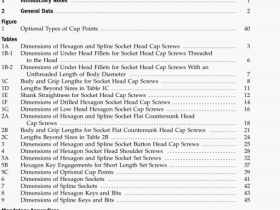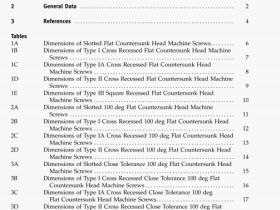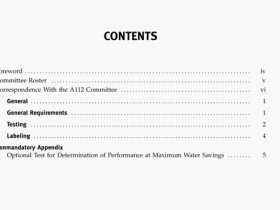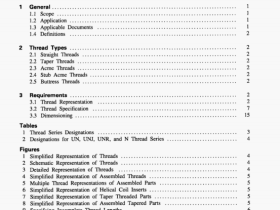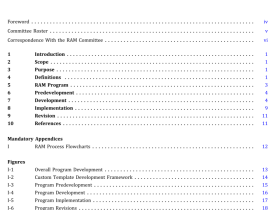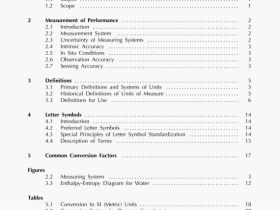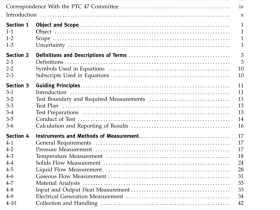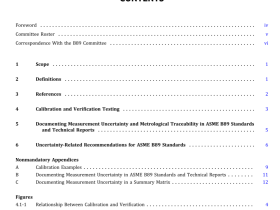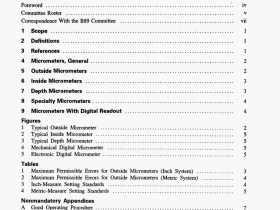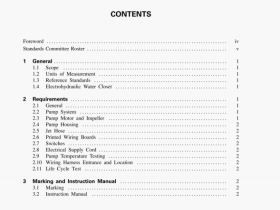ASME B16.22-2001 pdf download

ASME B16.22-2001 pdf download.WROUGHT COPPERAND COPPER ALLOY SOLDER JOINTPRESSURE FITTINGS.
(hi Other coppers and copper alloys are permitted. provided they meet the chemical requirements of 84% minimum copper and 16% maximum zinc, and provided the fittings produced from the copper alloy meet all the mechanical and corrosion-resistant properties for the end purposes of the fittings. The composition of the copper alloy shall contain nothing that will inhibit joining to the tube or to other fittings.
7 LAYING LENGTHS
Due to widely varying manufacturing processes. meaningful laying length requirements of fittings cannot he established. Consult the manufacturer for these dimensions.
8 TUBE STOPS
Except for repair couplings, fittings shall be manufactured with a tube stop. Repair couplings shall not require a tube stop. The tube stop shall control joint length, even with an external (FTG) end having the minimum outside diameter shown in Table 3 (Table 113). Examples of various tube stop configurations are shown in Fig. 2.
9 INSPECTION TOLERANCE
9.1 Linear Dimensions
An inspection tolerance, as shown in Table 2 (Table 112). shall be allowed on center-to-shoulder. center-tocenter, center-to-threaded-end, and shoulder-tothreaded-end dimensions on all fittings having internal (C) solder ends, as well as on center-to-solder-end and solder—end-to-threaded-end dimensions on all fittings having external (FTG) solder ends.
Coupling inspection limiLs for shoulder-to-shoulder and shoulder-to-end dimensions shall be double those shown in Table 2 (Table 112). except that the minus tolerance applied to dimension L (see Fig. 1) shall not result in a dimension less than 1.5 mm (0.06 in.).
The largest opening in the fitting shall govern the tolerance to be applied to all openings.
9.2 Ovality of Fitting End (C or FTG)
Maximum ovality of the fitting solder-joint end shall not exceed 1% of the maximum diameters shown in Table 3 (Table 113). The average of the maximum and minimum diameters shall be within the dimensions shown in the Table.
9.3 Inside Diameter of Fitting
The minimum cross-sectional area of the inside diameter through the fitting body shall not be less than the theoretical minimum area defined by diameter 0 in Table 3 (Table 113). The out-of-roundness condition of the cross-sectional area shall not exceed the value shown in Table 3 (Table 113).
For reducer or adapter fittings, the smallest end diameter shall apply. provided that this diameter does not restrict the other outlets.
9.4 Wall Thickness
The minimum wall thickness shall not be less than that shown in Table 3 (Table 113).
10 THREADED ENDS
Fitting threads shall be right-hand, conforming to ASME Bl.20.l. They shall be taper threads (NPT).
10.1 Countersink or Chamfer
All internal threads shall be countersunk a distance no less than one-half the pitch of the thread, at an angle of approximately 45 deg with the axis of the thread. All external threads shall be chamfered at an angle of 30—45 deg from the axis. Countersinking and chamfering shall be concentric with the threads.
The length of threads shall be measured to include the countersink or chamfer.
10.2 Threading Tolerances
Tapered pipe threads (NFl’) shall be checked by use of plug or ring gages in either standard or limit types. When gaging internal taper threads, the plug gage shall be screwed hand-tight into the fitting. The reference point for gaging internal product threads depends on the chamfer diameter. When the internal chamfer diameterexceeds the major diameter of the internal thread,thereference point shall be the last thread scratch on thechamfer cone. Otherwise,when the internal chamferdiameter does not exceed the major diameter of theinternal thread, the reference point shall be the end ofthe fitting. In gaging external taper threads,the ringgage shall be screwed hand-tight on the external thread.On the external thread,the ring gage shall be flushwith the end of the thread.
Tolerance for an internal threaded end having aninternal shoulder shall be from the gage reference point(notch) to one turn small. Tolerance for an internallythreaded end without a shoulder,and for an externallythreaded end,shall be from one turn small to oneturn large.
10.3 Design of Threaded Ends
The wrenching section of internally threaded endsshall be polygonal, and the wrenching section of exter-nally threaded ends shall be furnished with eitherpolygon or flats,at the manufacturer’s option.
